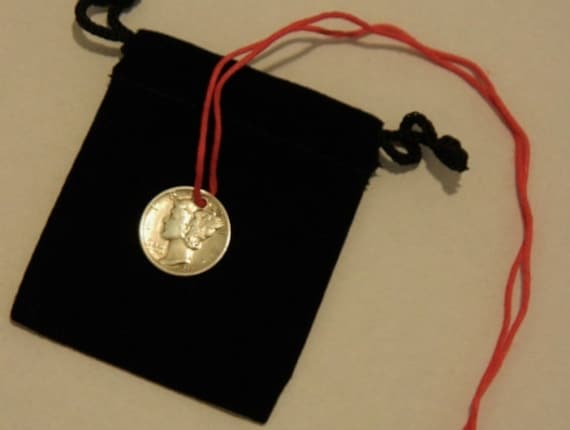 I was inspired to look into and share the chemistry behind the silver dime charm this week. The first flash of inspiration was my lesson in powders (I have been taking very informal classes in hoodoo recently and love it), and the second was a post by Candle Smoke Chapel that they had a new etsy listing of silver dime charms. So thank you both for the inspiration! Now on to the science!
I was inspired to look into and share the chemistry behind the silver dime charm this week. The first flash of inspiration was my lesson in powders (I have been taking very informal classes in hoodoo recently and love it), and the second was a post by Candle Smoke Chapel that they had a new etsy listing of silver dime charms. So thank you both for the inspiration! Now on to the science!
The science behind the Mercury/Silver Dime Charm
The mercury dime, or silver dime charm, if you are not familiar with it goes like this: If you wear a silver dime around your ankle and if you walk through a powder (ex: hot foot) the dime with absorb the hit and tarnish, keeping you safe.

Image from Lucky Mojo
For the sake of example let’s look at what happens if you are wearing a silver dime and walk through hotfoot powder. Hot foot powder is made primarily of sulfur and crushed hot peppers with the option of other nasties. The key ingredient here in terms of what is going to physically happen to your silver dime is the sulfur. The sulfur in the powder will react with the silver on the surface of the coin, causing it to “tarnish” in a RedOx reaction. I found this awesome old school video about the reaction:
For the sake of repetition here is the reaction again:
2Ag(s)+S(s) -> Ag2S(s)
Sulfur (S) basically wants two more electrons… wants them REALLY BAD, and Silver (Ag) has an extra that it isn’t too attached to. Sulfur takes one electron from two silvers making it S(2-) and each silver Ag(1+) causing them to the two silver and the sulfur atom are now sharing, and create a black solid Ag2S, which is the tarnish you see on silver.
Silver doesn’t need solid sulfur to tarnish. In fact Hydrogen Sulfide gas that can be found in the atmosphere can also react with silver. H2S (hydrogen sulfide gas) can be the result of the decomposition of plants and animals, or some industry of some sort. In fact just about any sulfur compound can cause tarnishing including hardboiled eggs, mayonnaise, mustard and even rubber bands. If you have ever worn silver jewelry into a hot springs you will have also seen this same reaction.
In conclusion:
The roots of this charm seem to be the fact that several popular powders that are used when throwing against someone ( crossing powder, goofer dust, and hotfoot powder) have sulfur as a main ingredient. This sulfur reacts to the silver worn at the ankle by tarnishing through the reaction 2Ag(s) + S -> Ag2S(s).
This reaction is an example of an oxidation and reduction (RedOx) reaction. For more on this type of reaction here is another video:
More Reading on Silver Dimes (and references)